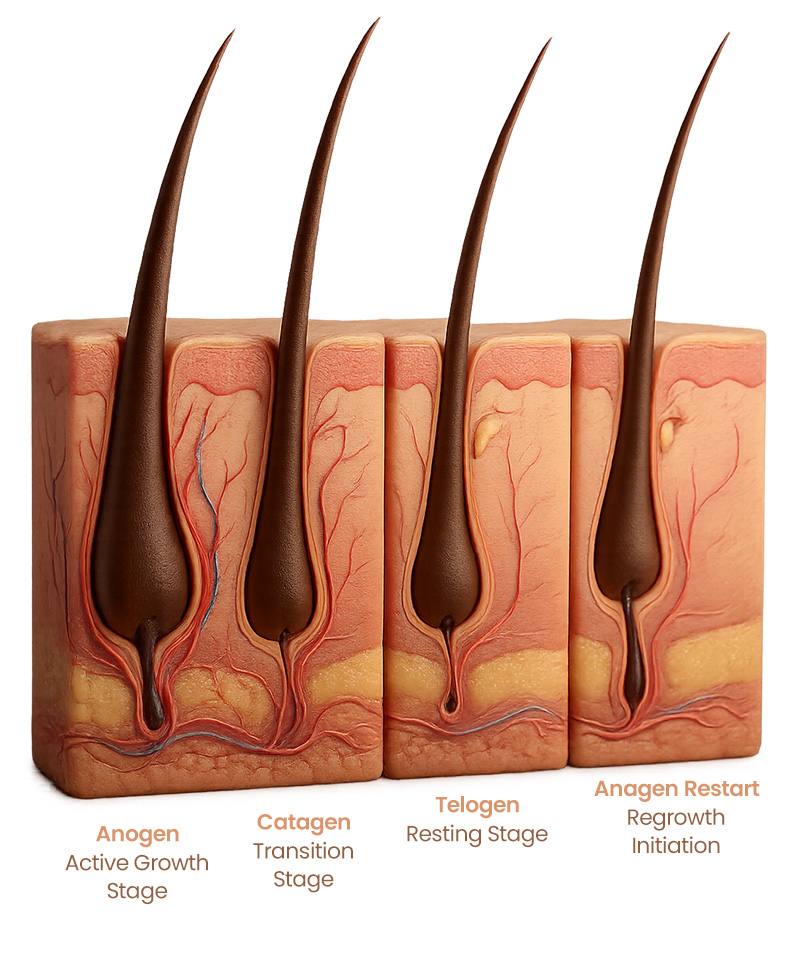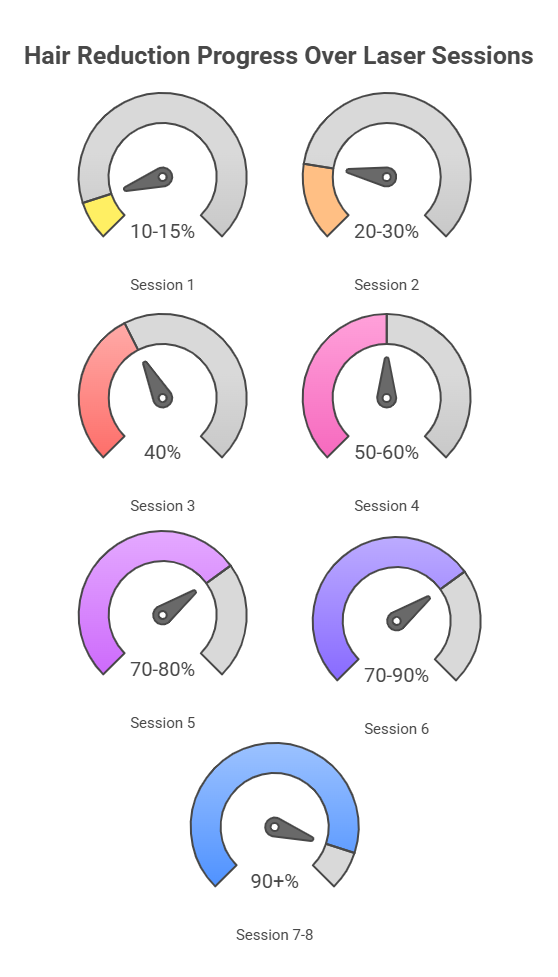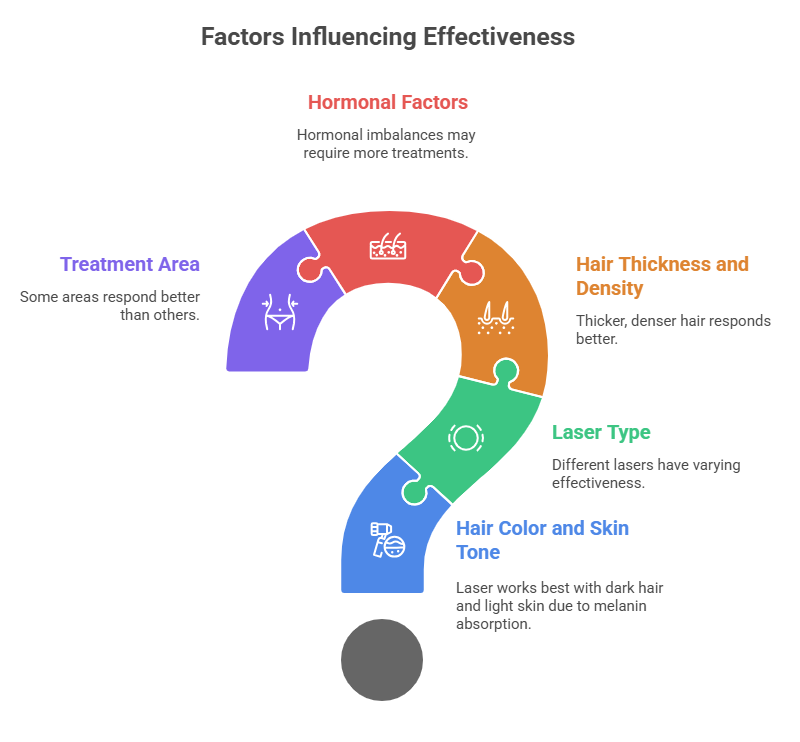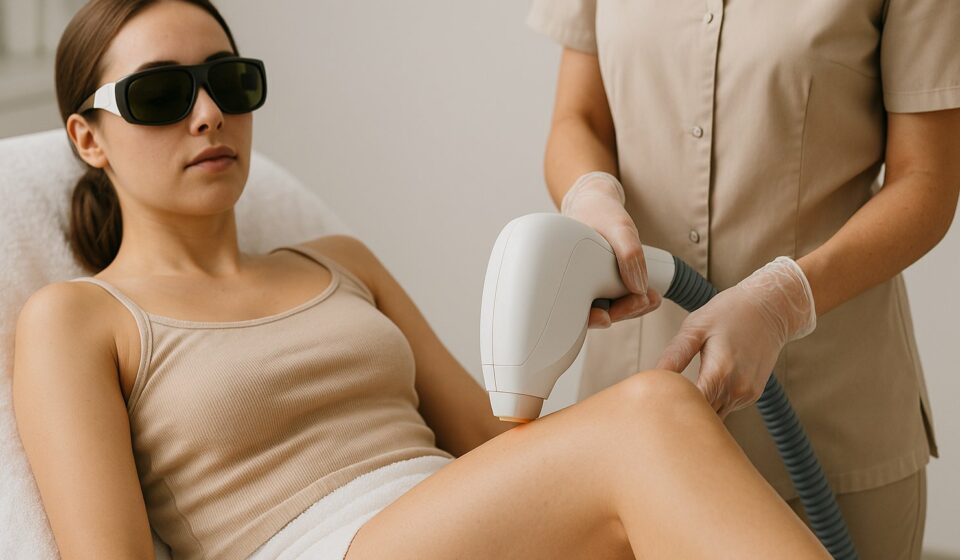Short answer, no, IPL hair removal is not permanent removal, it is permanent reduction. Many users see lighter regrowth and longer gaps between shaves, though some hair returns over time. The better your match of device, skin tone and hair colour, the longer those quiet gaps last.
Table Of Content
How IPL reduces hair
IPL stands for intense pulsed light. A flash of broad spectrum light is filtered and directed into the hair shaft. Melanin absorbs the light and turns it into heat. Heat then damages the follicle cells that drive growth. This idea, called selective photothermolysis, underpins both IPL and laser, as outlined by the Mayo Clinic.
- Target: Dark pigment inside the hair.
- Effect: Weakens growth cells so hair returns slower and finer.
- Timing: Best results when hairs are in active growth phase.

So, is it permanent
01. Long term reduction, not removal
IPL can give a very durable reduction. Many areas stay clear for months, sometimes longer, then need top up sessions. Hormones, body area and hair thickness all sway the timeline. Bikini and underarms often respond nicely. Hormonal areas like the face can be more stubborn.
02. Expectations by session
Most users need a course, then maintenance. Typical plans run eight to twelve sessions spaced four to six weeks apart. By the middle of a course, hair often sheds and patches clear. A simple visual guide helps set the scene for clients.

What affects how long results last
- Hair and skin contrast: Dark hair on light skin absorbs more energy and responds better. Very blond, red or grey hair contains little melanin, so response is limited.
- Hormones: Thyroid, PCOS and life stages can nudge new growth. Maintenance becomes useful in those cases.
- Body area: Underarms and bikini tend to clear faster than forearms or face.
- Device quality and cooling: Strong, consistent output with good cooling usually means steadier results and calmer skin.
- Operator technique: Overlap, fluence choice and pulse timing make a surprising difference.
- Spacing: Sticking to the schedule helps catch new anagen hairs and keeps momentum.

IPL versus laser for permanence
Both use light to heat melanin. The difference is focus. Professional lasers fire a single, precise wavelength. IPL spreads power across a wider band. That broader spread can feel gentle, but it also dilutes energy at the target. Many clinics find that lasers deliver brisker clearance and fewer top ups, especially across diverse skin tones.
| Aspect | IPL | Professional laser |
|---|---|---|
| Typical course | Eight to twelve sessions | Six to eight sessions |
| Skin tone range | Best on lighter tones | All tones with 755, 808 and 1064 nanometres |
| Six month reduction | Lower than diode and alexandrite | Higher reduction rates on average reduction rates |
| Maintenance | More frequent top ups | Less frequent top ups |
IPL is not as effective as true laser for long term reduction. That gap shows up in total sessions, consistency across skin tones and the time between top ups. For a plain English comparison, see IPL versus laser hair removal, and for durability after courses, read how long laser results last.
Is home IPL different
Home devices are convenient and budget friendly, though they use gentler energy. Expect steadier top ups to hold results. If progress stalls, or if your skin tone is deeper, a professional laser course is the sensible upgrade. Interest across the UK is growing fast, with laser hair removal now the most searched and requested treatment according to Rare Consulting.
Thinking of offering treatments in clinic
England is introducing a licence for non surgical cosmetic procedures which includes IPL and laser. You can read the plan on the GOV.UK website. Training, Core of Knowledge and device certificates help with insurance and local compliance.
We feature laser hair removal systems for all skin tones, with free training and certification, plus rapid UK support. Explore our laser hair removal machines, or go direct to Nu TriLaze Plus, Nu eRays Plus, and Nu TriLaze Lite. Want to try them first. Book a Demo. For specifications, finance and lead times, visit Request Details.
Dr Majid Zarandouz
Majid holds a PhD in organic chemistry and has been working with laser systems for decades. His career began in the mid-1990s, when he started researching and developing laser-based technologies for medical and cosmetic applications. Over the years, he has combined scientific expertise with practical engineering to design machines that are effective, durable, and straightforward to use in real clinic settings. As director of the British Institute of Lasers, Majid continues to focus on producing equipment that meets professional standards while remaining accessible to businesses of all sizes.

